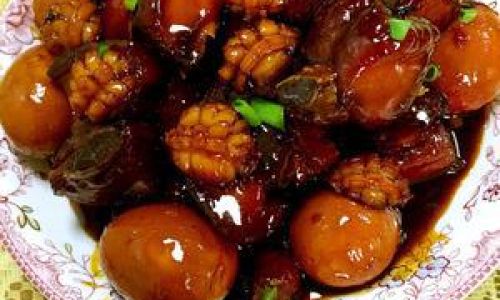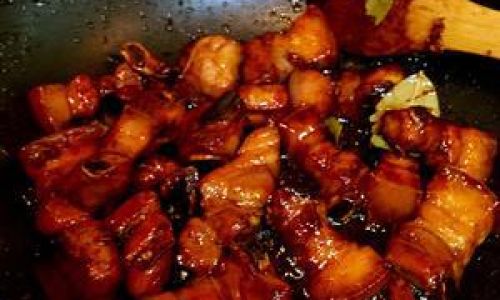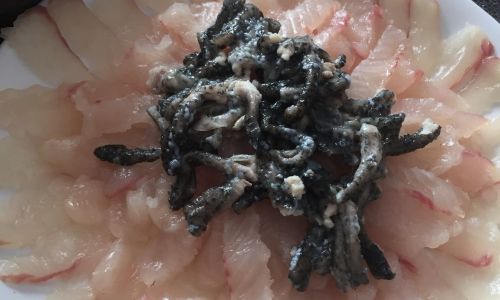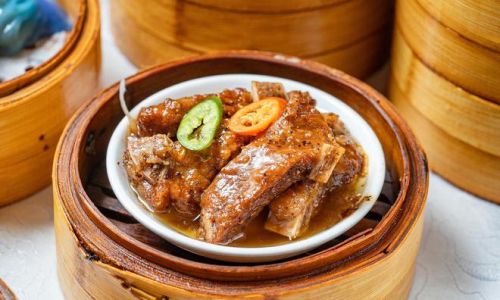Introduction
Braised pork belly, known in Mandarin as hong shao rou (红烧肉), is a cornerstone of Chinese home cooking. This dish, celebrated for its tender texture, rich caramelized flavor, and glossy mahogany appearance, has graced dining tables for centuries. Unlike its more elaborate restaurant counterparts, the homemade version prioritizes simplicity, accessibility, and the preservation of traditional techniques. This article delves into the art of crafting authentic homestyle braised pork belly, exploring its cultural significance, ingredient selection, and meticulous cooking process. Whether you are a novice cook or a seasoned home chef, mastering this recipe will reward you with a dish that embodies comfort, nostalgia, and the heart of Chinese culinary heritage.
The Cultural Significance of Braised Pork Belly
Braised pork belly is more than a meal—it is a symbol of celebration, family, and resilience. Historically, pork was considered a luxury ingredient in China, reserved for special occasions like weddings, festivals, and New Year’s feasts. Even today, a plate of perfectly braised pork belly signifies abundance and hospitality. The dish’s humble origins in peasant kitchens, where chefs transformed inexpensive cuts of meat into culinary masterpieces, reflect the Chinese philosophy of zuo wei (做味)—the art of elevating simple ingredients through skill and patience.

In many households, the recipe is passed down through generations, with each family adding subtle variations. Some prefer a sweeter glaze, while others emphasize aromatic spices like star anise or cinnamon. Despite these regional tweaks, the core principles remain unchanged: balance, patience, and respect for the ingredient’s natural flavors.
Ingredient Selection: The Foundation of Flavor
The success of braised pork belly hinges on selecting the right cut of meat. Pork belly, with its layers of fatty marbling and tender meat, is non-negotiable. Look for fresh, high-quality pork with a pinkish hue, firm texture, and minimal odor. Organic or pasture-raised pork is ideal, as it offers superior flavor and less shrinkage during cooking.
Key Ingredients:
- Pork Belly (2.2 lbs/1 kg): Opt for a piece with even fat distribution. Avoid overly lean cuts, as fat ensures moistness and richness.
- Aromatics: Fresh ginger (3-inch knob), garlic (5 cloves), and scallions (3 stalks) form the flavor base.
- Sugar (3 tbsp): Use rock sugar or granulated white sugar for caramelization. Brown sugar adds a molasses-like depth but may darken the sauce excessively.
- Soy Sauce (¼ cup): A blend of light and dark soy sauce balances saltiness and color. Light soy sauce contributes savory notes, while dark soy sauce imparts the signature reddish-brown hue.
- Cooking Wine (3 tbsp): Shaoxing wine, a rice-based Chinese cooking wine, enhances umami. Substitute with dry sherry if unavailable.
- Spices: Star anise (2 pods), bay leaves (2), and a cinnamon stick (optional) add warmth.
- Water or Stock (2 cups): Use unsalted chicken stock for deeper flavor or plain water for a cleaner taste.
Equipment Checklist:
- A heavy-bottomed pot or Dutch oven (to ensure even heat distribution)
- Tongs and a sharp knife for handling meat
- A fine-mesh strainer (for clarifying the sauce, if desired)
Step-by-Step Cooking Process
Preparing the Pork Belly

- Blanching: Cut the pork belly into 1.5-inch cubes (retain the skin for texture). Place in a pot of cold water, bring to a boil, and simmer for 3 minutes. This step removes impurities and tightens the meat.
- Drying: Pat the cubes dry with paper towels. Excess moisture will cause oil splatters during frying.
Caramelizing the Sugar (炒糖色 – Chǎo Táng Sè)
This critical step imparts the dish’s signature reddish-brown hue and complex sweetness.
- Heat 1 tbsp of oil in the pot over low heat. Add the sugar and stir continuously until it melts into a golden-brown liquid. Avoid high heat, which risks burning the sugar and imparting bitterness.
- Immediately add the blanched pork belly and toss to coat. The sugar will harden briefly but will remelt during cooking.
Searing the Meat
- Increase the heat to medium and sear the pork until golden on all sides. This step renders excess fat and seals in juices.
- Push the meat to one side of the pot and add the ginger, garlic, and scallions. Sauté until fragrant (1 minute).
Deglazing and Simmering
- Pour in the cooking wine, scraping the pot’s bottom to release fond (browned bits). Add the soy sauces, spices, and water. The liquid should submerge the meat by two-thirds.
- Bring to a boil, then reduce to a gentle simmer. Cover and cook for 60–75 minutes, stirring occasionally. The long, slow cooking melts the collagen in the pork belly, resulting in tender, melt-in-the-mouth texture.
Final Seasoning and Glaze
- Remove the lid and increase the heat to medium-high. Simmer for 15–20 minutes, spooning the sauce over the meat to glaze it. This reduces the liquid to a syrupy consistency.
- Taste and adjust seasoning with a pinch of salt if needed. Discard the spices and scallions.
Resting and Serving
- Let the pork belly rest for 10 minutes off the heat. This allows the flavors to meld and the meat to reabsorb juices.
- Serve hot with steamed rice, stir-fried greens, or pickled vegetables.
Troubleshooting Common Issues

- Bitter Aftertaste: Likely caused by burnt sugar. Lower the heat during caramelization and use a lighter touch when stirring.
- Greasy Texture: The pork belly was not blanched properly, or the cooking time was insufficient. Ensure thorough blanching and extend simmering by 15 minutes.
- Pale Color: Inadequate caramelization or excessive water. Add a touch of dark soy sauce for color correction.
Regional Variations
While the core recipe remains consistent, regional adaptations showcase China’s culinary diversity:
- Shanghainese Style: Emphasizes sweetness with extra sugar and a thick, glossy sauce.
- Sichuanese Twist: Adds doubanjiang (fermented chili bean paste) and Sichuan peppercorns for a spicy-numbing kick.
- Hunanese Version: Incorporates dried chili peppers and black vinegar for a tangy-savory profile.
Healthier Modifications
For a lighter take:
- Use half pork belly and half lean pork shoulder.
- Substitute half the sugar with coconut sugar or honey.
- Add root vegetables like daikon radish or carrots during simmering.
The Science Behind Perfect Braised Pork Belly
Braising is a dual-process cooking method: searing at high heat develops flavor via the Maillard reaction, while slow simmering breaks down tough connective tissues. The pork belly’s high collagen content converts to gelatin during cooking, creating a luxurious mouthfeel. The sugar caramelizes not only for color but also to create bitter-sweet caramelized compounds that enhance complexity.
Pairing Suggestions
- Beverages: Pair with jasmine tea to cut through richness, or a light lager beer for a casual meal.
- Accompaniments: Tangy pickled cucumbers, garlic spinach, or stir-fried bok choy balance the dish’s richness.
- Leftovers: Transform into fried rice or stuff into steamed buns (baozi) for a creative twist.
Conclusion
Homestyle braised pork belly is a testament to the beauty of simplicity. It requires no exotic ingredients or advanced techniques—just patience, attention to detail, and a willingness to embrace the alchemy of slow cooking. Each bite carries the weight of tradition, the warmth of family gatherings, and the quiet satisfaction of transforming humble elements into something extraordinary. As you savor your first forkful of tender, glossy meat, remember that this dish is more than a recipe; it is a culinary love letter written across generations. Whether enjoyed on a weeknight or at a festive banquet, hong shao rou remains an enduring symbol of Chinese home cooking’s heart and soul.






0 comments